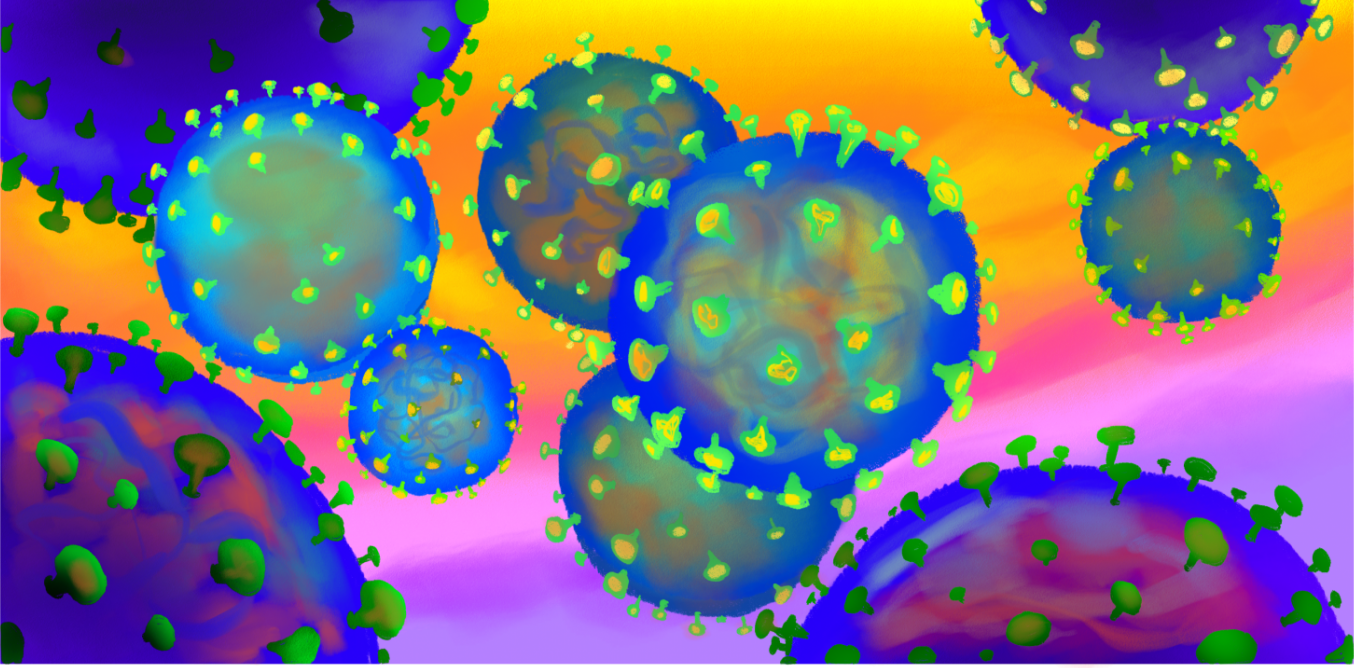In light of the increasingly global reach of the COVID-19 disease, also known as coronavirus, individuals within the Palo Alto Unified School District (PAUSD) have faced a variety of effects stemming from caution and fear of the spreading disease. The proliferation of the coronavirus has sparked concerns over the safety of residents in Santa Clara County, especially given that as of March 3, 11 out of the 106 total coronavirus cases in the United States are in this county.
As such, students and families are preparing for an increase in community coronavirus cases after a Feb. 28 district email sent to parents reported that two PAUSD students—one Palo Alto High School student and one Jane Lathrop Stanford student—had been sent home due to possible exposure to the virus. In an update on March 4, the superintendent stated that these actions were based on minimal information about secondary exposure to the virus, which in reality does not signify higher risk. “Had we known that information, I am not sure we would have acted differently in the moment,” he wrote. He also noted that there are currently no plans to close schools in the county.
According to district nurse Rosemarie Dowell, methods of avoiding infection include washing hands with soap and water for at least 20 seconds, avoiding touching the face with unwashed hands, remaining at home when sick and disinfecting frequently touched surfaces. Dowell also reiterated that the district would work closely with the Santa Clara County Public Health Department (SCCPHD).
Yet many students have already been impacted by the virus: in a district-wide message on Feb. 3, superintendent Don Austin urged students in contact with individuals returning from China to quarantine themselves for 14 days.
Sophomore Alanna Lee was one such student; shortly after her father returned home from Beijing in early February, her entire family followed outlined district policies and voluntarily self-quarantined for two weeks.
Lee recalls the period as a trying ordeal; she had to keep up with classwork from home, and her mother couldn’t go to work. “There was a lot of tension in our house before [the quarantine was formally announced],” Lee said. “My mom was super stressed out because she didn’t want it to affect me, and I think I was kind of affected by her stress. It was building up over time, and when the [self-quarantine] policy was released it was not a great day.”
Within the household, Lee’s father was quarantined on a separate floor of the home to reduce risk of infection. Lee found the limited contact and communication challenging. “It was weird to FaceTime my dad to talk to him when he was just upstairs,” she said. “I couldn’t talk to him in person, and he was right there.”
Many students also have relatives living in China who are impacted by the disease. Freshman Christine Wang’s grandparents are currently quarantined within their apartment building in Taiyuan. “[My grandparents] live in an apartment building inside a series of apartment buildings,” Wang said. “And the entire place they live in has essentially shut itself off. Apartments are huge—there’s a lot of people in them. If one person gets affected, it’s not going to be pretty.”
Since she lives in America, Wang feels that there’s not much she can do to directly help her grandparents; instead, she has devoted her time to researching the virus and staying aware of new developments.
Although masks don’t directly prevent the coronavirus, shipping face masks overseas has become a method of helping relatives in China. As soon as junior Ben Chen’s parents heard of the coronavirus outbreak, they immediately took action. “The only thing that we could help [with] was to buy masks,” Chen said. “My parents, after they get off work, just go to every CVS or Walgreens that they can find or they pass by. They go in and ask if there are masks or not.”
Chen’s parents then send the masks to China for his relatives to use. According to Chen, his family has already sent around 2,000 masks to China. “[My parents] care about this thing very, very much,” he said. “We would call our relatives back in China every day to check in on them to see how they’re doing. I know some of the masks already got to my relatives, so that was good.”
Due to the virus’ origin in China, it has also sparked incidents of racism against individuals of Chinese descent. Wang described an incident in which others specifically avoided her friends while they were wearing masks in public. “My friends went to the movies a while ago,” Wang said. “They were in a group, and they were all wearing masks because they were afraid of coronavirus. The line [for tickets] was empty by the time they got to it. The people did not want to be near Chinese people who were wearing masks.”
For junior Michael Xu, the association of the coronavirus with China has resulted in his aunt’s business losing customers. “I have an aunt who runs a Chinese medicine store locally,” he said. “Her business has been suffering because now people associate Chinese people with coronavirus, so people are hesitant to go to her place because of the fear that they might catch the coronavirus.”
Similarly, junior Madeline Siu, who works at Teaspoon, has also witnessed the impact of the racism brought on by the coronavirus. “Teaspoon has had a sign on their door asking people who have been to China in the past 14 days to refrain from entering the building,” she said. “I’ve always felt uncomfortable with the sign because I feel that it discriminates against Chinese customers, but the other day I had a customer personally ask me if I had [the coronavirus] after she gestured at the sign.”
Yet reactions and fears about virus contagion may also be exacerbated by extensive media coverage and stories spreading across the internet. In reality, the MERS-CoV and the SARS-CoV viruses, which are related to the coronavirus, have both had higher mortality rates; according to current data, the fatality rate of infected individuals from the novel coronavirus disease is only 2.3%.
As such, Wang believes fears over the coronavirus are exaggerated, especially for those who are younger. “The thing with the coronavirus is there could be people who have the coronavirus, but they’re young—[in their] 20s or 30s—and they’re fine,” Wang said. “They could have a bit of a severe flu for a while, but they stay at home and [the virus] passes.”
Conversely, after the report of a third case of infection in the Bay Area, SCCPHD health officer and director Sara Cody called for increased community caution. “I do understand that this whole situation may feel overwhelming,” she said. “But we do need everyone to start thinking about what actions they can take now so we can be prepared for the possibility of further spread of the virus in our community.”


